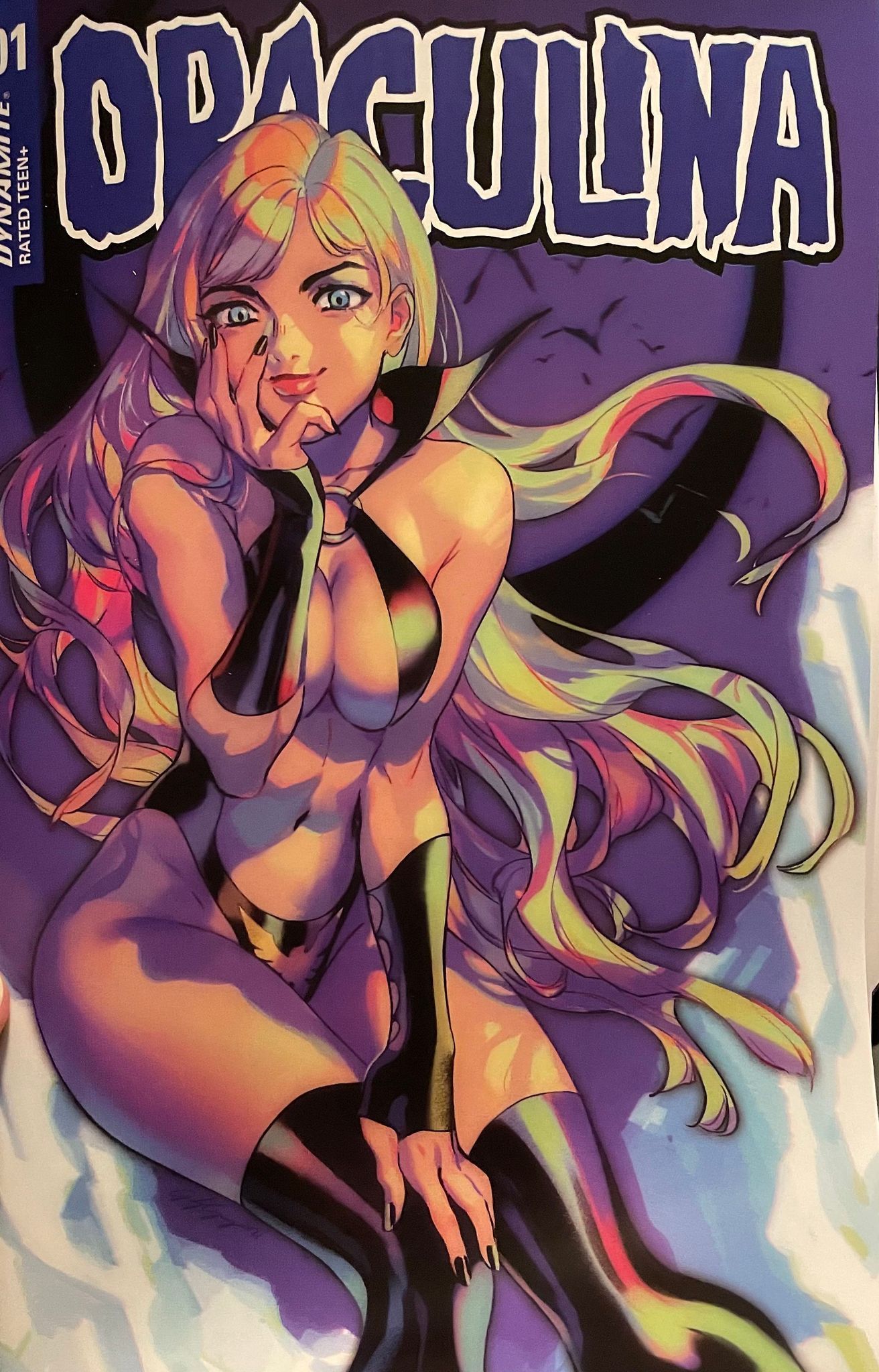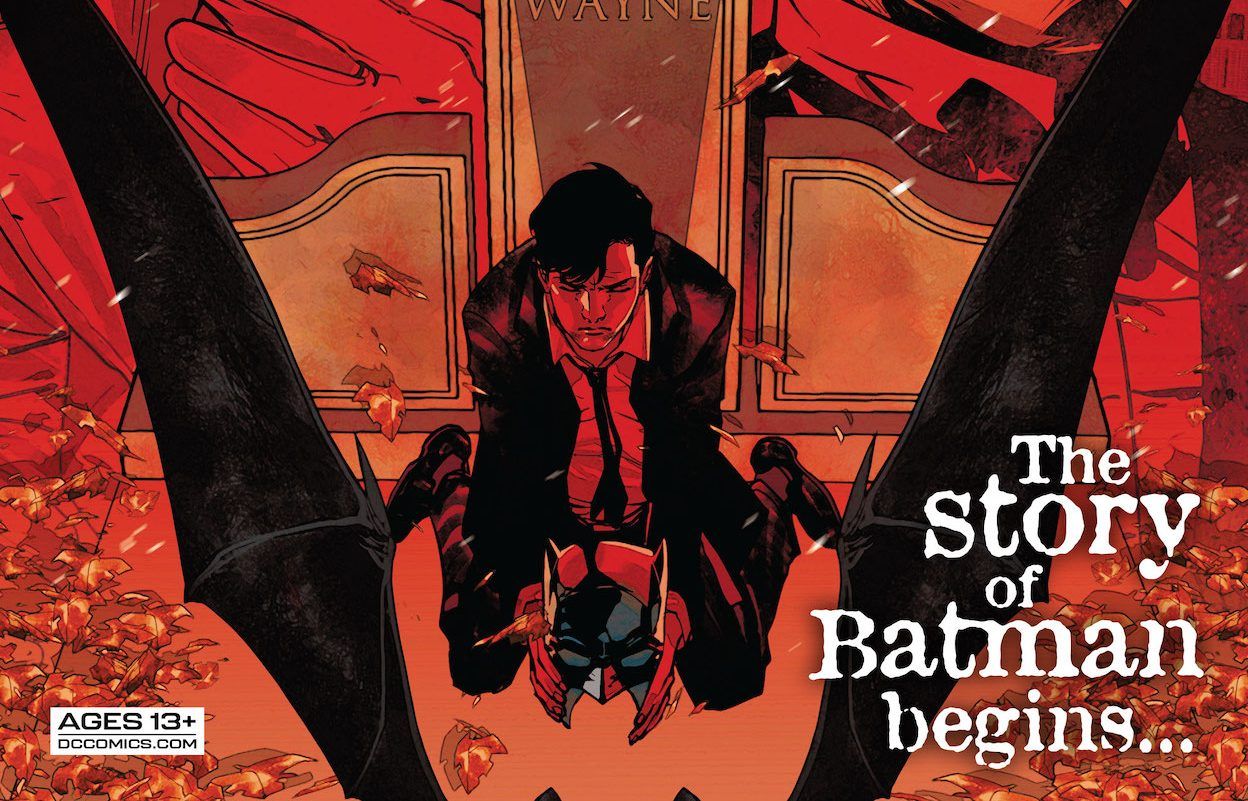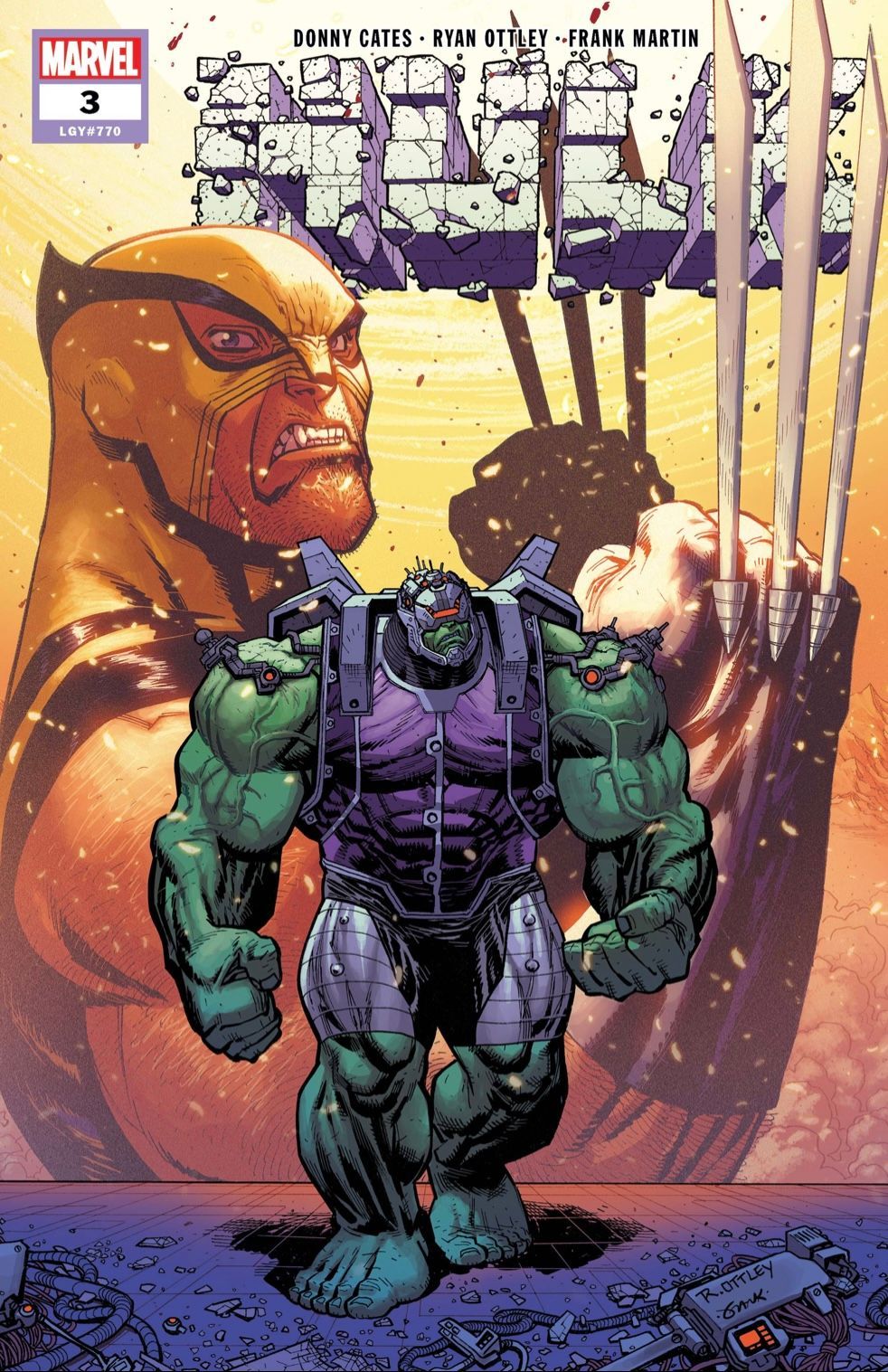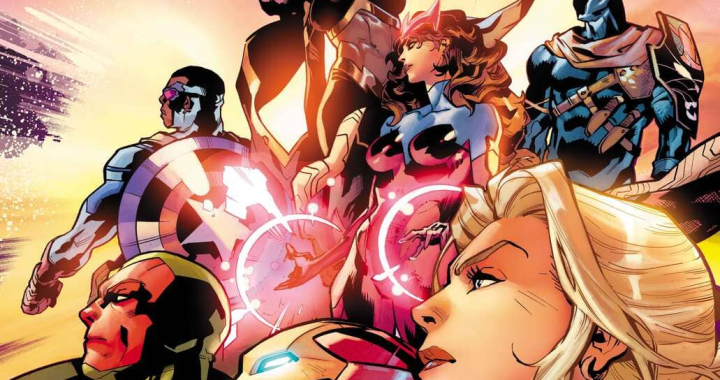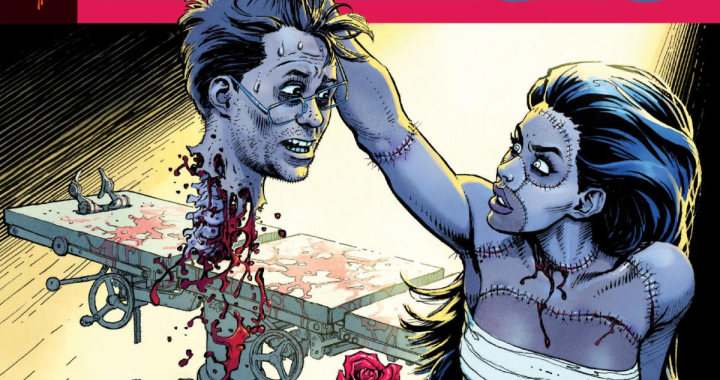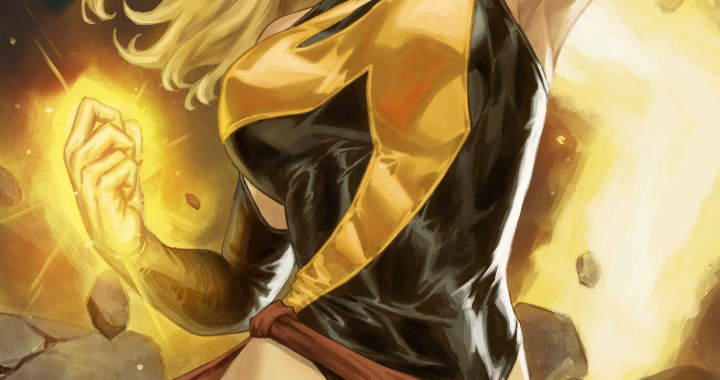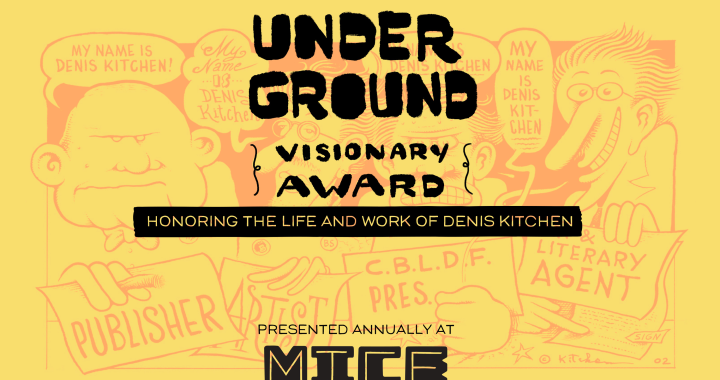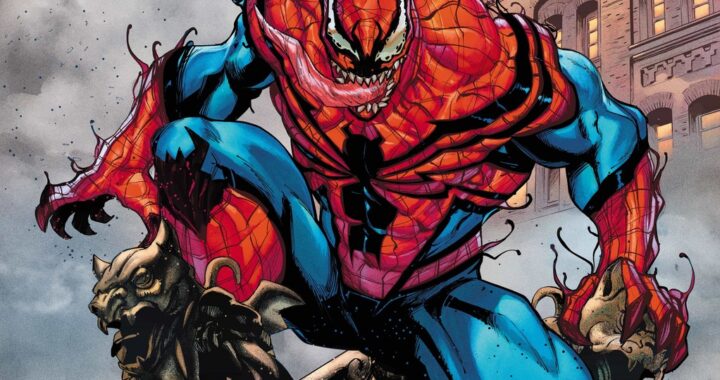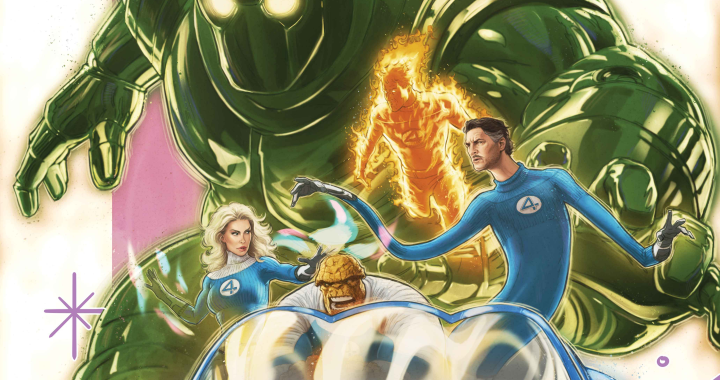
Review: The Batman Who Laughs #1
 Physical darkness, the actual absence of light can be terrifying. The fear of not knowing what could be right in front of us, just beyond our reach or lurking behind us is enough to induce incapacitating fright. However, there is a darkness far more horrible than even the inkiest black night and all the dreadful denizens hidden in its ebony folds. I am speaking of spiritual darkness, nothing to do with religion, but a dark night of the soul nonetheless. Batman has always been at home in this kind of darkness, in fact he was born in it, perhaps it is more accurate to say he was born of it. The night his parents were brutally ripped from his life right before his young eyes the darkness changed from physical to spiritual for him. Now he is not alone in that darkness, there is a predator stalking him there, a predator the likes of which he knows intimately, yet he remains a mystery. This is the brutal beauty of The Batman Who Laughs. In this villain, more so than any other Batman has faced, including The Joker there exists the heart, soul and mind of Bruce Wayne. How can he expect to defeat an enemy that is so intimately attached to his own machinations and motivations?
Physical darkness, the actual absence of light can be terrifying. The fear of not knowing what could be right in front of us, just beyond our reach or lurking behind us is enough to induce incapacitating fright. However, there is a darkness far more horrible than even the inkiest black night and all the dreadful denizens hidden in its ebony folds. I am speaking of spiritual darkness, nothing to do with religion, but a dark night of the soul nonetheless. Batman has always been at home in this kind of darkness, in fact he was born in it, perhaps it is more accurate to say he was born of it. The night his parents were brutally ripped from his life right before his young eyes the darkness changed from physical to spiritual for him. Now he is not alone in that darkness, there is a predator stalking him there, a predator the likes of which he knows intimately, yet he remains a mystery. This is the brutal beauty of The Batman Who Laughs. In this villain, more so than any other Batman has faced, including The Joker there exists the heart, soul and mind of Bruce Wayne. How can he expect to defeat an enemy that is so intimately attached to his own machinations and motivations?
Batman is unique to his Justice League peers in one very important aspect, he has no super powers. He is truly a man among gods, yet he is their equal, in some ways perhaps even their superior, but when all is said and done Batman is a man in bat themed body armor, a man driven beyond madness to a place very few reach, yet a man of flesh and blood, and spirit. Bruce Wayne armed with the lessons he has learned in his life’s travels from Crime Alley to Nanda Parbat to the spiritual realm of Zur-En-Arrh, location and concept has faced the biggest and baddest the DCU has to offer and has come out on top, very often the worse for wear, but alive and victorious. This speaks volumes, not just of who Batman is, but of who The Batman Who Laughs is as well. What Scott Snyder has done so eloquently with The Batman Who Laughs is pitted Batman against himself in a way that has not been possible before the creation of this extremely imaginative villain.
Snyder has once again teamed up with the insanely talented artist Jock this time to explore the question, how can Batman defeat Batman? The very existence of The Batman Who Laughs begs the question what immovable object can end this unstoppable force? The last time we Batman laid eyes on this terrifying spectre was at the conclusion of the Metal story in a crumbling cave while engaging the Joker. The two sinister ghouls made good their escape, but not before the Joker somewhat haphazardly saved Batman from what looked to be his ultimate demise at the hands of The Batman Who Laughs. This would be an act that would not be looked upon favorably by Batman’s evil alter-ego, nor would it bode well for the Joker later. The dreadful duo is reunited in the Legion of Doom Headquarters. The Batman Who Laughs, though appearing to be held captive, quickly and easily vanishes after striking a deal with Lex Luthor. The two impresarios of evil part company now the only members of an uneasy alliance.
The Batman Who Laughs re-emerges, but this time not alone. He is joined by the most violent iteration of Batman ever to grace the page, the Grim Knight, more Punisher than Dark Knight Detective. This is a Batman who breaks both of Bruce’s cardinal rules, he carries a gun and boy does he use it, wasting no time in creating an abstract masterpiece of carnage upon greeting two unsuspecting Arkham security guards with guns blazing. As each bullet rips through its intended target carrying blood and bone fragments with it his apparent thirst for blood is topped only by his proficiency with his weapons. Although Scott Snyder has been known to hit us with sizable chunks of exposition, particularly when setting up a new narrative, but that is not the case with this issue. The action begins immediately with a beautifully staged chase scene. Jock handles the visuals with such aplomb that the images seem to actually move upon the page. These panels bristle with kinetic energy as Batman leaps from the speeding three-wheeled Bat-Raptor onto an eighteen wheeler hauling a complete house. While Jock’s images are the stuff of sequential art dreams, Snyder shows off his skills with some amazingly entertaining dialog between Batman and Alfred. Between speaking directly to us via the caption boxes and keeping up a steady stream of engaging conversation with Alfred, Batman even manages to make a comedic reference to Gotham’s Dark Knight insurance policies. Snyder expertly weaves these lighter character beats into the darker tapestry of the overall narrative to great effect. Amidst the mounting sense of impending doom there is a kind of gallows humor to these lighter moments and though there isn’t an over abundance of jokes here, there doesn’t need to be. Snyder gives us just enough slack to keep the noose from prematurely snapping our necks with the weight of surmounting consequences.
Certainly on the surface, The Batman Who Laughs would appear to have much more in common with the Joker, but that is in fact the opposite of Snyder’s intentions. He has repeatedly been quoted as saying The Batman Who Laughs is Batman, not the Joker. He is the culmination of everything these two characters are, the best of what makes them who they are. He is Bruce’s training, his experiences, but perhaps most frightening is that he is driven to the same extent that Bruce is to reach his desired outcome. He is the Great White Shark hunting the black waters of Bruce’s psyche, the apex predator that will not be denied the kill. As Batman says to Commissioner Gordon, “He’s not the Joker, Jim. He’s Batman. He’s me…He’s here to win. To kill anything and everything that’s a threat.” Those are terrifying words. This entire exchange between Batman and Gordon made my blood run cold. Snyder’s script so eloquently and precisely captures Batman’s fear that it is unmistakable.
The wonderful thing about The Batman Who Laughs is that there is so much more we don’t know about him than we do at this point. The mystery that shrouds this character also mystifies us and transversely we have to know what’s in the dark. What lurks behind that spiked blindfold, eyes that see only death or the eyes of a child that watched his parents be brutally killed. Snyder explores this character for us, pulling back the curtains ever so slightly to allow us a deeply glimpse with each page. We are like the attendees in the operating theater and Snyder the attending surgeon, he operates, we watch and with each flourish of the scalpel another detail is laid bare for us to see. The mystery of Batman coming face to face with his own lifeless body at the beginning of this issue sets the tone and the onion is skinned from there.
Visually, Jock perfectly captures the horrific aspects of Snyder’s narrative. Just as he did when the pair scared us stiff with their collaborative foray into the forest with their work on Wytches. Colorist David Baron’s brilliant use of a more or less monochromatic palate is the perfect choice to color this almost Gothic tale of terror. Jock is a tour guide into the shadowy realms not only within Gotham, but inside Bruce’s mind. He is able to show us where the monsters dwell as well as where the bodies are buried. The final sequence between the Joker and Batman leading up to what is arguably the most mind-blowing reveal is nothing short of visual poetry. There is a nuanced beauty to the violence that only Jock could capture. His version of the Joker is straight out of the nightmare realm where evil creatures populate a city of shadows and woe. What he and Snyder have created is an operatic work of epic sadness and fear. One man’s journey to truly meet his inner demons and somehow defeat them. This issue leaves you wanting more, but afraid of what is to come. 5/5!
[yasr_overall_rating size=”large”]
Writer- Scott Snyder
Artist- Jock
Colors- David Baron
Letterer- Sal Cipriano
Author Profile
Latest entries
 Comic BooksFebruary 14, 2022Review: Draculina #1
Comic BooksFebruary 14, 2022Review: Draculina #1 Comic BooksJanuary 25, 2022Review: Batman: The Knight #1
Comic BooksJanuary 25, 2022Review: Batman: The Knight #1 Comic BooksJanuary 20, 2022REVIEW: Hulk #3
Comic BooksJanuary 20, 2022REVIEW: Hulk #3 TV & MOVIESJanuary 12, 2022Review: Dexter: New Blood- Sins of the Father. Series Finale?
TV & MOVIESJanuary 12, 2022Review: Dexter: New Blood- Sins of the Father. Series Finale?





